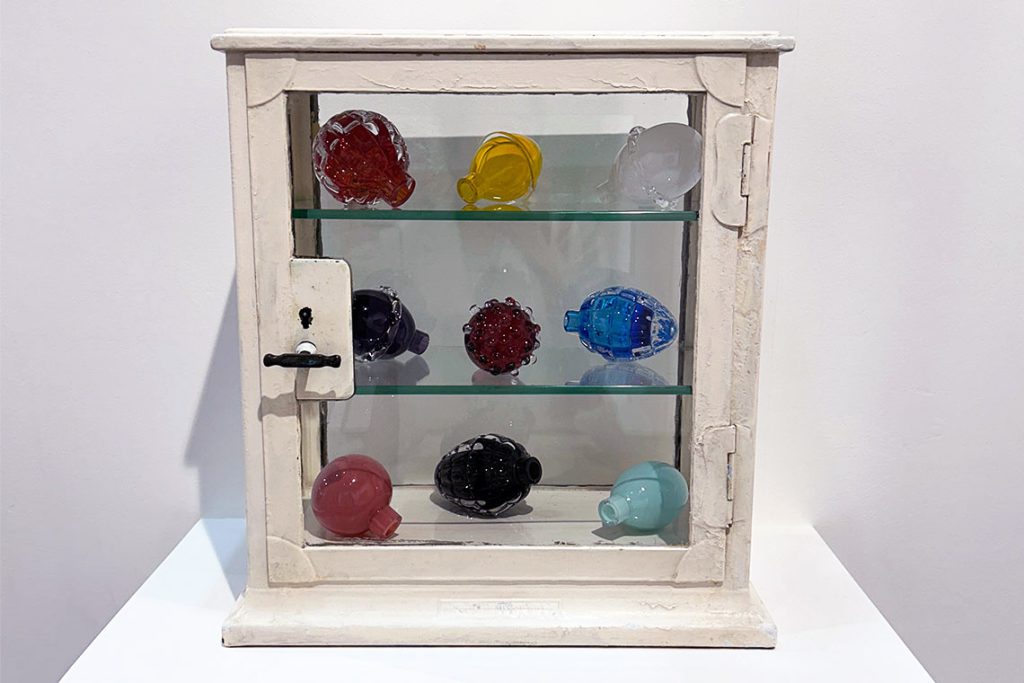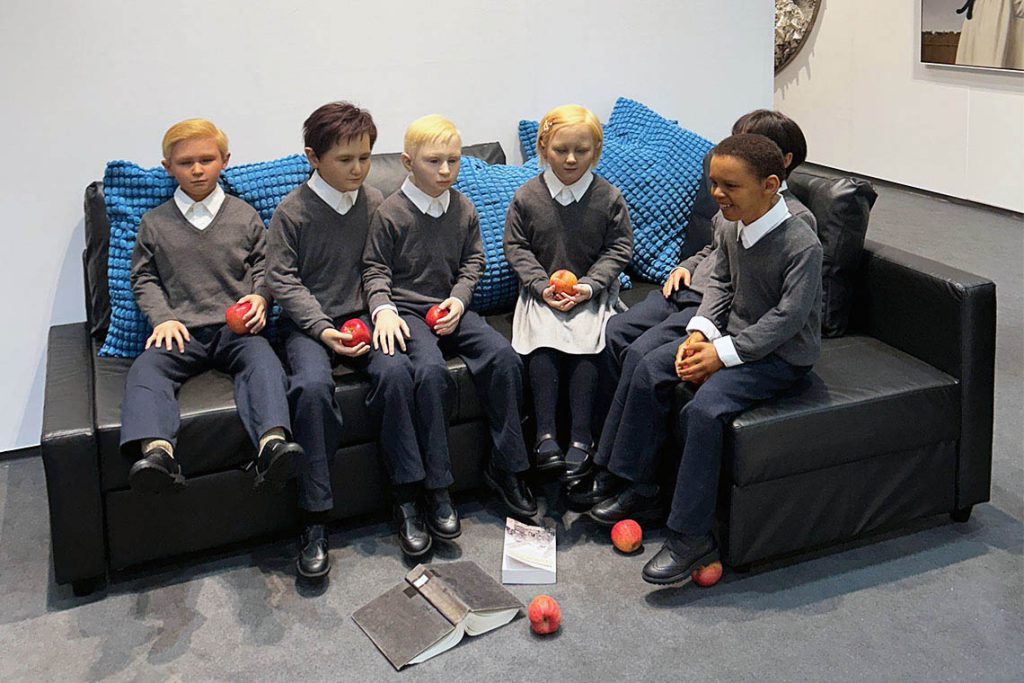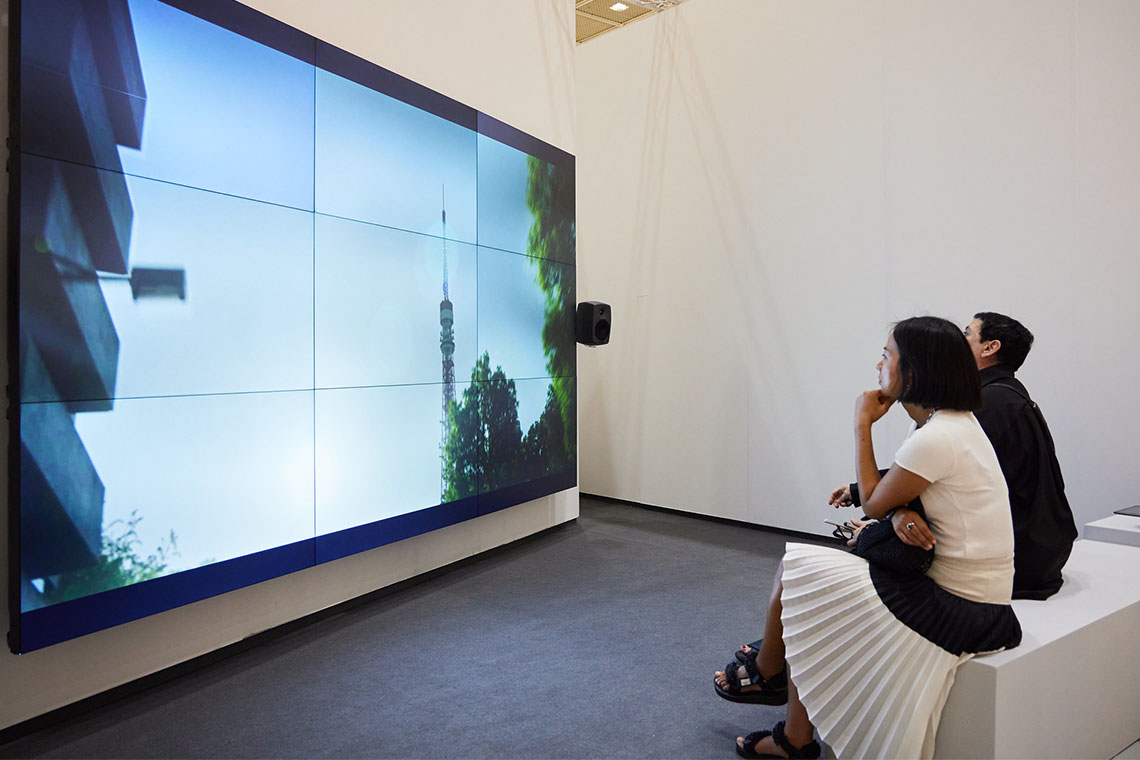With a greater presence of Asian galleries, the visually sumptuous Frieze Seoul 2024 offers a sense of Korea’s relationship with the international art world.
FOMO is real for art enthusiasts visiting or living in Seoul this week. With performances, talks and exhibition openings springing up across the city all at once, one feels pulled in every direction, unsure of which event to attend at the expense of another.
Given the frenetic atmosphere, the VIP preview of Frieze Seoul – one of the three key occasions largely responsible for the current art madness in South Korea – felt relatively calm, owing to improved crowd management and an earlier opening time. Whereas the first two editions began welcoming visitors in the afternoon hours, this year’s kicks off each morning at 11am, allowing more time for attendees to explore the fair.
The composed air of the event does not mean that it lacks enthusiasm. Across its expansive venue, Halls C and D at COEX Convention and Exhibition Center in southern Seoul, thronging the more than 110 galleries were groups of collectors, celebrity figures and curators engaged in lively dialogue and avidly looking.
As with most art fairs, the majority of the works comprise paintings and sculptures. Perrotin offers a visual feast with its vibrant wall of multicoloured flowers by Takashi Murakami and an equally striking painting, Into the Red (2024), by the London-based Korean artist Kim Hun-Kyu. White Cube, on the other hand, presents a gentle yet arresting display of Marguerite Humeau’s iridescent sculpture, the twist (2024), and Howardena Pindell’s spray dot painting, Tesseract 7 (2023), its green hues enriched by Danh Vo’s gold-painted cardboard, 120°W (2011) and Mona Hatoum’s Still Life
(medical cabinet) III (2024), a cabinet of colourful, grenade-like objects. Highlights from PKM Gallery, one of the prominent homegrown galleries in South Korea, include the renowned modern Korean artist Yoo Youngkuk’s geometric painting of brilliant red hues, sold for USD 1.5 million during the preview.

Amidst abstractions or works that draw from sceneries and symbols familiar to the attendees of Frieze Seoul – mostly from South Korea and East Asia – the Accra- and London-based Gallery 1957 stands out for its set of powerful works that engage diverse aesthetic traditions and politico-historical narratives. During the preview, visitors responded with awed exclamation at Amoako Boafo’s elegant portrait and Yaw Owusu’s bold canvases composed of US pennies, which evoke the patterns of traditional Ghanaian textile, kente.
Many of the new media works are concentrated in Focus Asia, a section unique to Frieze Seoul. Curated by Joselina Cruz, Director and Curator at Museum of Contemporary Art and Design in Manila, and Hyejung Jang, Chief Curator at Doosan Art Center in Seoul, the section showcases ten solo artists from Asia-based galleries opened in or after 2012. Barakat Contemporary, which has introduced several artists from the Arab region to South Korea – Lawrence Abu Hamdan and Farah Al Qasimi being the most recent to exhibit at the Seoul-based gallery – made its Frieze Seoul debut with Korean artist Jun So Jung’s video work, Syncope (2024). As the work interrogates the speed of moving bodies and data in the modern world through sound, its presentation at Frieze Seoul invites reflection on the temporality of art fairs, which epitomise the accelerated pace of modernity.
A standout in Focus Asia is the New Delhi-based Blueprint 12’s artist, Kingsley Gunatillake. Contrasting with many works in the section that heavily feature digital components, Gunatillake’s work is deeply tactile, with copper soldiers waging war on the charred and torn pages of books. Inspired by the destruction of the Jaffna Library in Sri Lanka in 1981, from the Protest series (2024), the works resonate as they recall ongoing atrocities beyond the festive art fair grounds, where cultural heritage and human lives are similarly under threat.

Echoing this more overt political commentary is a sculptural installation by Li Wei at Tang Contemporary’s booth on the other side of the fair. Stopping visitors in their steps is an eerie hyper-realistic installation of six children sitting on a couch – who turn out to be world leaders including Barack Obama, Vladimir Putin and Angela Merkel.
It is difficult to read meaning from a commercially driven affair, which is more an assemblage of artworks that appeal as collectibles than a curated whole under an overarching theme. Frieze Seoul’s significance lies in its reflection of the Korean art scene’s place in the global art world. This year highlights the growing connections between the Korean art community and international galleries, with blue-chip dealers featuring more works by Korean artists – recall Kim Hun-kyu at Perrotin – and offering a wider range of accessible pieces, contrasting with the previous years’ emphasis on showing high-profile artists such as Picasso and Warhol.
Importantly, this year’s edition witnessed an increase in galleries from Asia, with first-time exhibitors such as DAG from New Delhi, Asia Art Center from Taipei and the Tokyo-based Mizoe Gallery – a significant advancement for an event positioning itself as the leading art fair in the region and one to rival Hong Kong’s Art Basel. Given this context, it is noteworthy that the presence of galleries from West Asia remains limited. Would Frieze Seoul be able to attract galleries from wider Asia, including West Asia and catalyse more artistic exchanges? While it may be too early to start thinking about next year’s edition – the fair has just opened to the public – there is keen anticipation for future developments of this captivating art fair.



